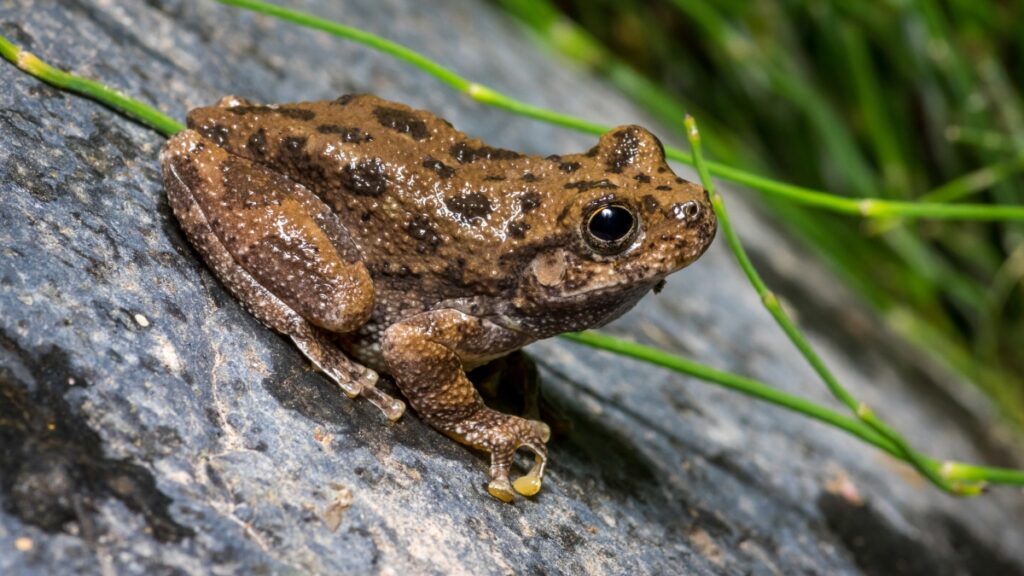Amphibians A-to-Z

Canyon Tree Frog
The canyon tree frog (Hyla arenicolor) is a species of tree frog native to the southwestern United States and northwestern Mexico. Here’s some information about this amphibian:
- Physical Description: Canyon tree frogs are relatively small frogs, with adults typically measuring around 1 to 2 inches (2.5 to 5 centimeters) in length. They have slender bodies with smooth, moist skin that can vary in color from shades of brown and gray to green, depending on their surroundings and environmental conditions. They have large, adhesive toe pads that enable them to climb and cling to vertical surfaces such as rocks and vegetation. Their eyes are large and protruding, with horizontal pupils.
- Habitat: Canyon tree frogs are primarily found in arid and semi-arid regions with rocky habitats, including canyons, cliffs, rocky streams, and desert oases. They are often associated with riparian areas and rely on water sources such as streams, springs, pools, and seeps for breeding and foraging. They are well adapted to hot and dry environments and may seek refuge in crevices and caves during the heat of the day.
- Behavior: Canyon tree frogs are primarily nocturnal and crepuscular, becoming active at dusk and remaining active throughout the night. They are arboreal and spend much of their time climbing and foraging in trees, shrubs, and other vegetation near water sources. They are highly agile and can leap from branch to branch with ease. Their calls are often described as a series of short, high-pitched chirps or trills, which they use to communicate with other frogs and establish territories during the breeding season.
- Diet: Canyon tree frogs are insectivorous and feed primarily on a variety of small invertebrates, including insects, spiders, and other arthropods. They use their long, sticky tongues to capture prey, which they swallow whole.
- Reproduction: Breeding typically occurs during the spring and summer months, following periods of rainfall that fill temporary water sources. Male canyon tree frogs congregate near water bodies and produce advertisement calls to attract females. Females lay clusters of eggs in shallow water, which adhere to submerged vegetation or rocks. The eggs hatch into tadpoles, which undergo metamorphosis into juvenile frogs within a few weeks.
Overall, the canyon tree frog is a fascinating and ecologically important amphibian species adapted to life in arid and rocky habitats. Its ability to thrive in challenging environments highlights its resilience and adaptability as a species.
Related posts:
Wonder Nature
0





 Total views : 3577
Total views : 3577